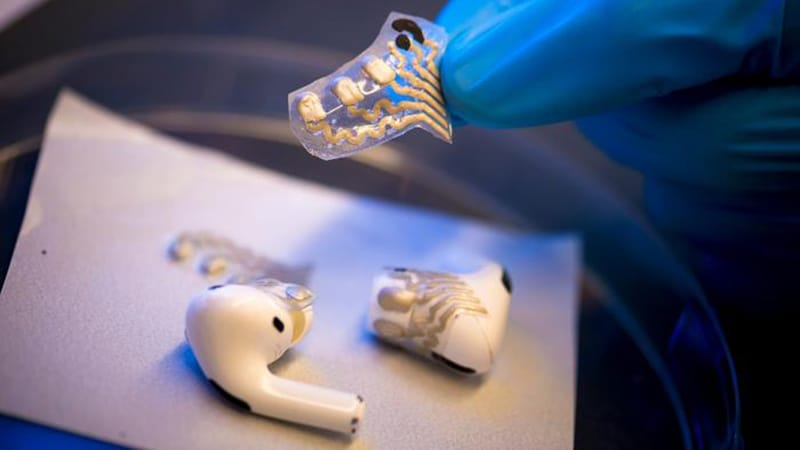Core Concepts
Earbuds with sensors can monitor brain activity and treat disorders in real-time.
Abstract
Engineers at UCSD are developing sensors for earbuds to monitor brain activity and lactate levels. These sensors could treat conditions using sounds or electrical pulses. The technology aims to revolutionize health monitoring and treatment, offering continuous data outside clinical settings. The potential applications range from brain-related diseases to mood conditions and sleep disorders. The integration of brain and body sensors opens new avenues for research and clinical advancements.
Development of sensors for earbuds
Potential applications in health monitoring and treatment
Integration of brain and body sensors
Continuous data monitoring outside clinical settings
Revolutionizing health technology
Earbuds Could Monitor Your Patient's Brain State
Stats
"In a study published in Nature Biomedical Engineering, the sensors proved just as effective as traditional monitoring methods like electroencephalogram (EEG) headsets for brain activity and blood samples for lactate levels."
"Lactate tends to rise after a seizure, for example. Higher lactate may also signal diabetes or heart disease."
Quotes
"We can hijack the auditory signal to drive brain states towards more desirable outcomes." - Gert Cauwenberghs, PhD
"Smartwatches can give you a lot of data, but in a way it's very limited." - Gert Cauwenberghs, PhD
Key Insights Distilled From
by Kristin Cann... at www.medscape.com 10-12-2023
http://www.medscape.com/viewarticle/997325
Deeper Inquiries
How can in-ear wearables revolutionize remote patient monitoring beyond traditional methods?
In-ear wearables have the potential to revolutionize remote patient monitoring by offering continuous monitoring capabilities outside clinical settings. Unlike traditional methods that require periodic visits or stationary equipment, in-ear wearables can provide real-time data on brain activity and lactate levels while patients go about their daily lives. This continuous monitoring can enable early detection of conditions such as epilepsy, strokes, tinnitus, and sleep disorders, allowing for timely intervention and personalized treatment plans. Additionally, the integration of biofeedback and neurofeedback in these wearables can enable closed-loop systems that automatically adjust therapies based on real-time responses, enhancing the effectiveness of treatment and improving patient outcomes.
What are the potential drawbacks or limitations of using earbuds as health monitors?
While in-ear wearables offer promising capabilities for health monitoring, there are potential drawbacks and limitations to consider. One limitation is the accuracy and reliability of the data captured by the sensors on earbuds compared to traditional monitoring methods like EEG headsets or blood samples. Ensuring the sensors maintain tight contact with the ear and accurately capture physiological data can be challenging, especially during physical activities or in varying environmental conditions. Additionally, there may be concerns regarding the comfort and long-term wearability of earbuds for continuous monitoring, as prolonged use may cause discomfort or irritation to the ears. Privacy and data security issues also need to be addressed to protect sensitive health information collected by the wearables.
How might the integration of biofeedback and neurofeedback in closed-loop systems impact healthcare in the future?
The integration of biofeedback and neurofeedback in closed-loop systems has the potential to significantly impact healthcare in the future by enabling personalized and adaptive treatment approaches. By combining real-time physiological data with brain activity monitoring, closed-loop systems can deliver targeted interventions such as sound therapy, electrical stimulation, or cognitive behavioral techniques to manage a wide range of conditions including mood disorders, cognitive degeneration, and chronic pain. These closed-loop systems can automatically adjust therapies based on individual responses, optimizing treatment outcomes and reducing the need for manual intervention. This approach not only enhances the efficiency of healthcare delivery but also opens up new possibilities for tailored and effective treatments across various medical specialties.
0
